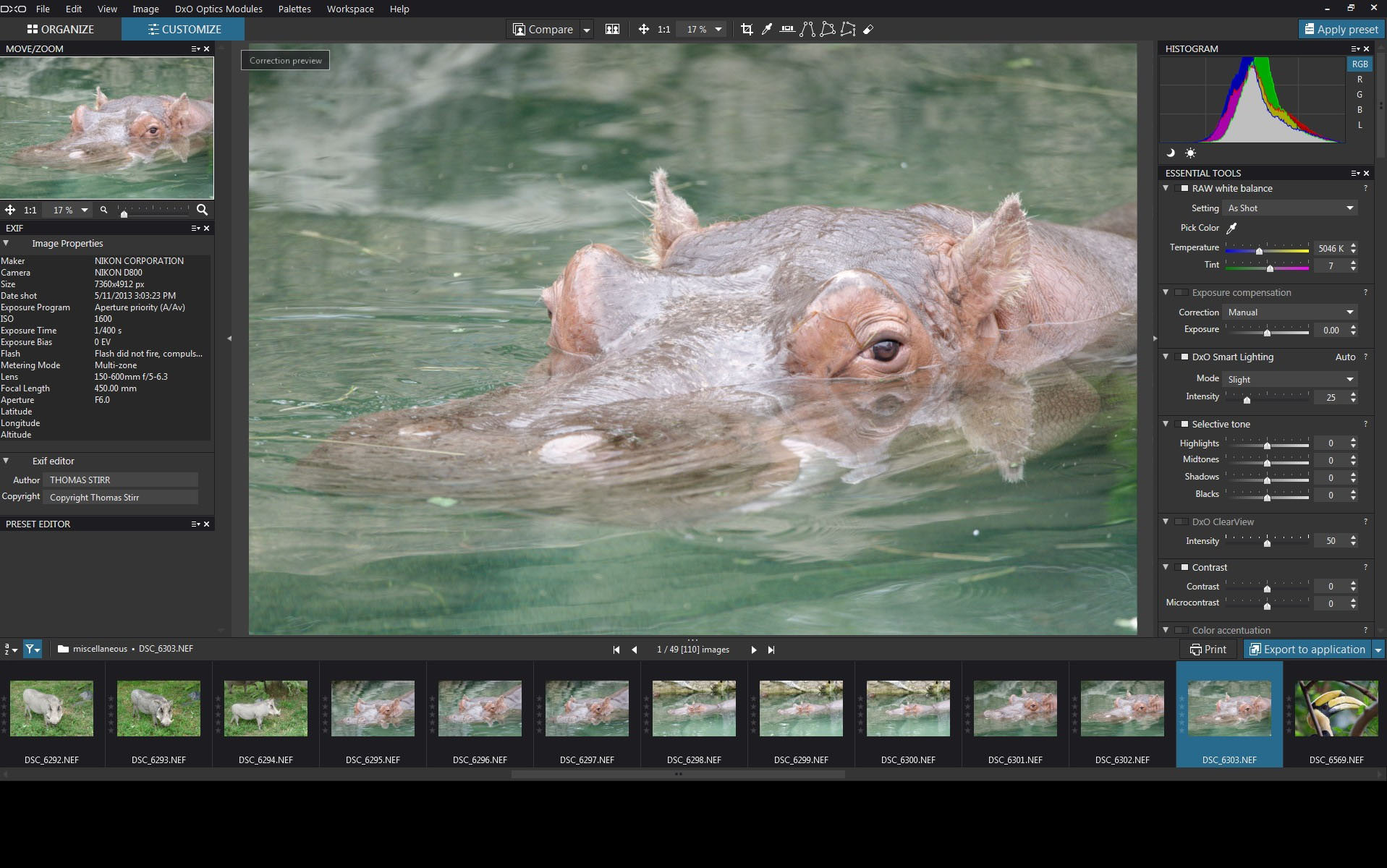
- DXO OPTICS PRO 8 TUTORIALS HOW TO
- DXO OPTICS PRO 8 TUTORIALS SOFTWARE
- DXO OPTICS PRO 8 TUTORIALS DOWNLOAD
Pixels with a good exposure (not too overexposed and not too underexposed) have a higher weight other pixels get a lower weight. To do so, HDR tools combine each pixel of each exposure using a kind of weighted average. When creating an HDR image, the first step is to combine several bracketed photos. The exact same project using photos preprocessed in LightroomĪs can be seen, this workflow produces an awful result! It introduces many problems (loss of texture in the top/right and bottom/left corners, incorrect light gradient behind the lamp, book cover color has shifted, etc). PhotoEngine project with three bracketed photos There is one small problem: this workflow is incorrect! Without even realizing it, you will get subpar images with this approach.
DXO OPTICS PRO 8 TUTORIALS HOW TO
Part 3: how to get the most of Lightroom & PhotoEngine Part 3 explains why and how to proceed to get the best out of Lightroom and PhotoEngine. Can we simply preprocess the raw photos in Lightroom like regular photos and send the result to PhotoEngine? The answer is definitely NO! You will get a worse result than no preprocessing. In addition to that, you can create custom lens profiles in Lightroom and correct various aberrations such as chromatic ones.įor the best image quality, it would be nice to combine the strengths of PhotoEngine and Lightroom. PhotoEngine also removes noise when combining the photos but you do not have a direct control. Lightroom has a sophisticated noise reduction feature. If we look really closely at the previous images, we see that in some case Lightroom improves a bit the image. Then, can we simply just use PhotoEngine? Is preprocessing the photos with Lightroom useful? In Part 1 we have seen that PhotoEngine was required. PhotoEngine is clearly required even for medium dynamic range photos. Using this photo and Lightroom's Contrast, Highlight, Shadows, Clarity and Curve settings, I tried to create an image close to the one created with PhotoEngine.Īt first glance, the image is not that far from the PhotoEngine one! But looking at the details, we discover many issues. One photo in the bracket set barely covers the whole dynamic range of the scene. I was quite curious to see what could be done with these new features.
DXO OPTICS PRO 8 TUTORIALS SOFTWARE
Lightroom and other products have recently introduced features inspired from HDR software such as Highlight Recovery, Shadow Recovery, Clarity, etc. But is it also true with a medium dynamic scene such as the still life I am using in this tutorial? A specialized HDR product like PhotoEngine is required when working with a scene with a large dynamic range. If you are familiar with HDR, you already know the answer. When talking about workflow between PhotoEngine and Lightroom, it is perfectly legitimate to ask the question: is PhotoEngine actually useful? Can't we just use Lightroom?


DXO OPTICS PRO 8 TUTORIALS DOWNLOAD
If you don't have PhotoEngine, now is the right time to download the free trial! I am assuming that you already have Lightroom or a simlar product and have some idea on how to use it. In the first one, I covered panorama creation with Kolor Autopano and PhotoEngine. This tutorial is the second in the Oloneo PhotoEngine Workflow series. The same rules apply to other products such as: Photoshop with Camera Raw, Capture One Pro and DxO Optics Pro. I am using Lightroom 5.2 in this tutorial. In fact, it is quite easy to get worse results by preprocessing your photos! You will learn how to avoid the common pitfalls.

You will discover that the right workflow and settings are not obvious. The goal of this tutorial is to show how to use Adobe Lightroom and Oloneo PhotoEngine together to get the best possible results. What are the do's and don'ts of preprocessing?.Should I preprocess my photos before using PhotoEngine?.Is it useful to use PhotoEngine in addition to my regular photo tool?.I often get questions on how to use PhotoEngine with general purpose photography software.


 0 kommentar(er)
0 kommentar(er)
